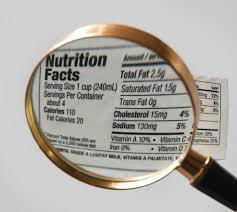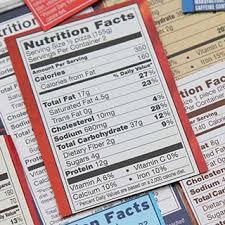Reading Food Labels
Let's discuss the importance of reading food labels to aid in our journey towards better health. Many of us have been taught to focus solely on the number of calories and the amount of fat in food products, but these two metrics are not the key indicators of a food's healthiness.
Calories mean nothing to the body. They don’t measure energy, just temperature. They are a complete waste of time. If you wanted to continue counting them, then just know not all calories are created equal. For example, 200 empty calories from a can of Coke are different from 200 calories of nutritious avocado.
So, what should we focus on when reading food labels?
🧁Carbohydrate and sugar content
🧂Salt content
📝Ingredients
🧁Carbohydrates and sugars cause insulin to rise, which leads to weight gain if we consume them in excess of our daily energy requirements.
To make things easier, we can look at the value of carbs/sugars per 100g of the product. Anything under approximately 10-15g per 100g is considered okay. The higher the number, the more processed and refined the food likely is. For instance, a product with 65g of carbs/sugar per 100g is one that you should avoid.
🧂High sodium content is added to foods to preserve them for a longer shelf life. The general rule is to avoid products with sodium content higher than their calorie content per serving. Instead of table salt, which is sodium chloride and like a knife to our arteries, we can opt for healthier options like Himalayan rock salt or Celtic sea salt. These
📝It's always important to read the ingredients list. The first ingredient listed is what the product is primarily made of. Therefore, it's best to choose products with fewer ingredients. High fructose corn syrup, corn, and soy are some of the most genetically modified food items on the planet, and it's wise to avoid them. Chemical preservatives can cause inflammation, leading to weight gain and other health problems.
While we can't always avoid processed foods, we can certainly reduce their consumption as much as possible. At the beginning, reading food labels may seem tedious, but it will become easier with time. It's a rewarding feeling when we know we're making better choices for our health. We should be wary of misleading labels like "fat-free," "low-fat," "instant," "quick," or "natural," as these indicate some kind of process that’s changed the product and do not necessarily indicate the product's overall healthiness.
Whole food and with as little plastic packaging as possible is always the best way. Then having fun and enjoying the process of improving our health through these simple tools empowers and motivates us to keep going.


